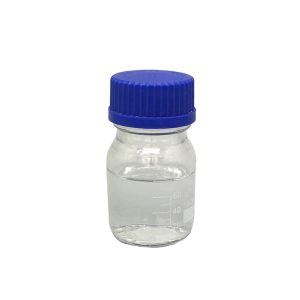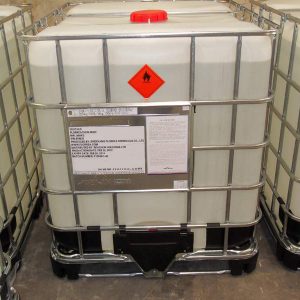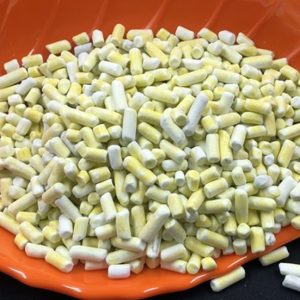Description
Sodium amyl xanthate (SAX) is a fascinating organic compound that plays a significant role in the field of mineral processing, particularly in the flotation of metallic ores. As a member of the xanthate family, sodium amyl xanthate is primarily utilized as a collector in flotation processes, enhancing the separation of valuable minerals from their ores. This article delves into the properties, applications, production processes, environmental considerations, and safety measures associated with SAX.
Chemical Structure and Properties
Sodium amyl xanthate has the chemical formula C5H11O2S2Na. It is classified as an alkyl xanthate, which consists of an alkyl group (in this case, amyl) attached to a xanthate moiety. The compound typically appears as a yellow to light brown powder that is water-soluble and exhibits a characteristic fruity odor. The stability of sodium amyl xanthate is influenced by pH, temperature, and exposure to air, and it is known to decompose in acidic conditions.
Applications in Mineral Processing
SAX is predominantly used as a flotation reagent in the extraction of various metallic ores, including:
Copper: It enhances the flotation of copper sulfide minerals by selectively adhering to their surfaces, promoting their separation from gangue minerals.
Zinc: SAX is effective in the flotation of zinc sulfide ores, helping to increase the recovery rates during processing.
Lead: In lead flotation, sodium amyl xanthate aids in the collection of lead sulfides, ensuring higher yields for mining operations.
The use of SAX is crucial in the mining industry, as it helps in maximizing the extraction of valuable minerals while minimizing the environmental impact associated with traditional extraction methods.
Sodium amyl xanthate can be synthesized through a reaction between amyl alcohol and carbon disulfide in the presence of sodium hydroxide. This process typically involves the following steps:
Preparation of Sodium Hydroxide: Sodium hydroxide is mixed with water to create a basic solution.
Reaction: Amyl alcohol is then reacted with carbon disulfide in this alkaline medium, resulting in the formation of sodium amyl xanthate.
Purification: The product is filtered, washed, and dried to obtain a high-purity final product, often employing techniques such as recrystallization.
Environmental Considerations
While sodium amyl xanthate is effective in mineral processing, there are environmental concerns associated with its use. The decomposition of SAX can release toxic byproducts, such as hydrogen sulfide, and other sulfide compounds, which can pose risks to aquatic life and overall ecosystem health. Consequently, mining operations must implement strict environmental management measures to mitigate these risks, including careful monitoring of wastewater and effluent streams.
Safety Measures
As with many chemical agents used in industrial processes, SAX poses several health risks. Prolonged exposure to SAX may cause skin irritation, respiratory problems, and eye damage. Therefore, appropriate personal protective equipment (PPE) should be employed during handling, including gloves, goggles, and respirators as necessary. Additionally, proper storage in a cool, dry place away from acids and oxidizers is crucial to prevent any hazardous reactions.
Conclusion
Sodium amyl xanthate plays a pivotal role in the mineral processing industry, especially in the flotation of various metallic ores. Its unique properties and effectiveness as a collector make it indispensable, albeit with associated environmental and safety considerations that must be managed carefully. As the mining industry increasingly prioritizes sustainable practices, the development of safer alternatives and innovations in reagent formulations will likely shape the future landscape of ore processing technologies. Understanding and respecting the properties and impacts of sodium amyl xanthate is essential for achieving both operational efficiency and environmental stewardship in the pursuit of mineral resources.







Reviews
There are no reviews yet.